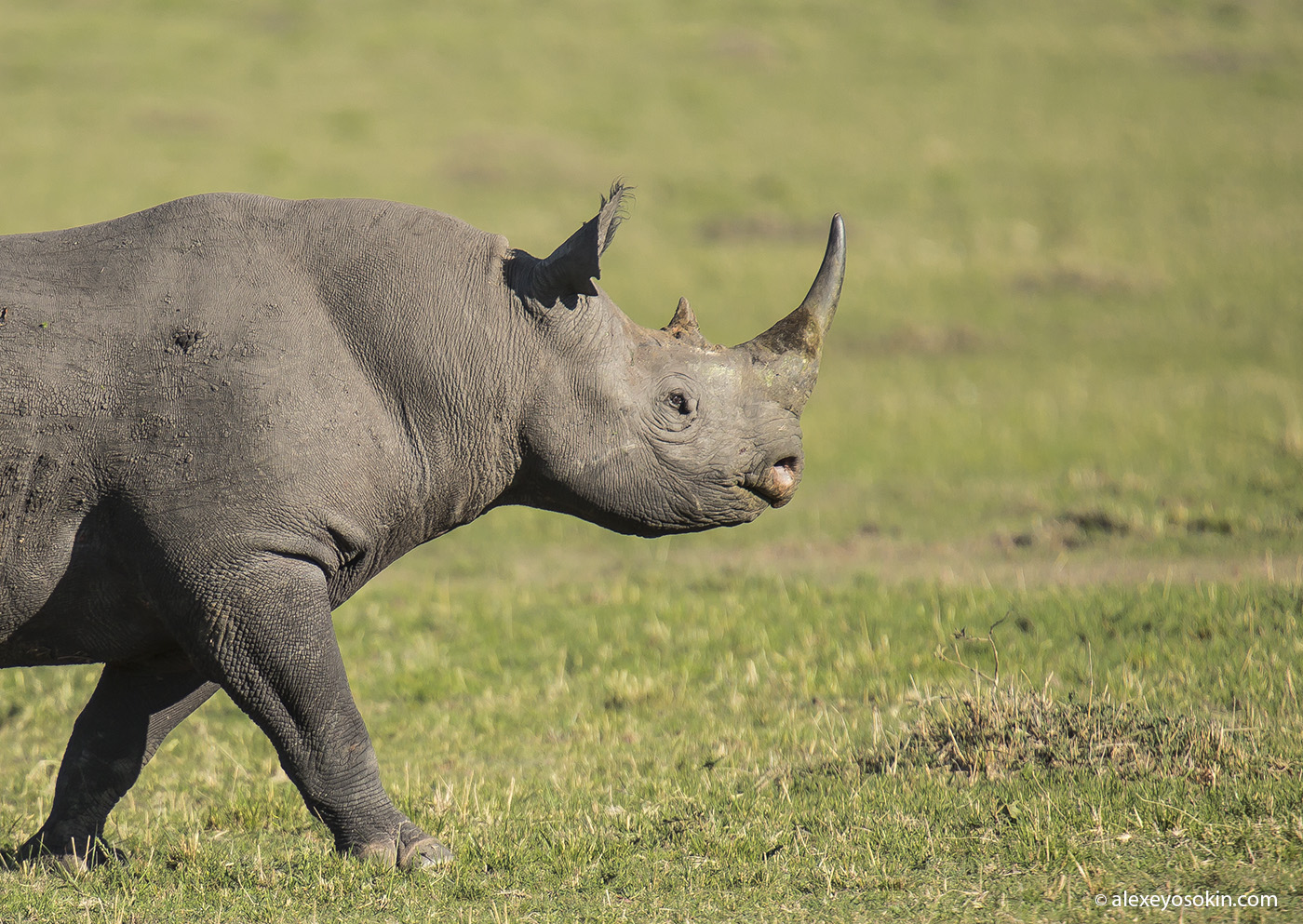At Oxford, a surprisingly exact imitation of a horn of rhinoceros was made using horsehair. The scientists plan to flood the black market with ‘rhino horns out of horsehair’ to make it glutted, to saturate the Chinese medical industry with cheap fake horns and protect the endangered black rhinos that have been hunted to the brink of extinction.
The matter is that this giant ‘battering-ram’ of the huge animal is different from real horns, because the rhino horns actually are thickly matted wool, hair that grow glued thanks to a secretion from special glands on the horn of the rhinoceros. They do not consist of a bone and do not grow from the skull. Following the idea of the nature, the scientists used the tough hair of the tails of horses - closely related - and glued them together with a customized meshwork made of reclaimed silk.
The result was a horn that was strikingly similar to the real one not only by the look of it and to the touch, but also by its chemical composition. This is especially important, because in the eastern medicine, this component features unprecedented healing properties and is used only as a powder, and it’s simply impossible to distinguish the rhino keratin from the horse keratin by taste.
The precious powder is considered a powerful aphrodisiac, relieves of all diseases, brings longevity, and it almost guarantees ‘immortality’ when used regularly. The tradition is fueled by rumors: in 2007, for example, a story was spread around Viet Nam about an official who allegedly was cured of cancer with the help of a horn. In the most desperate situations, people do not rely on doctors for treatment, but go to healers for exotic miraculous drugs. Therefore, the demand for these horns and derivatives remains high, and as a result, over 7,000 giants have been killed in southern Africa alone over the past decade. It is clear, that the legislative measures to combat poaching are not enough, because the cost of a rhino horn on the black market reaches $220,000 a piece, the price per kilogram is about $75,000.
The authors of the study believe that plausible imitations should be simple to manufacture, and they are similar in structure and chemical composition to the original horns. Co-lead author Professor Fritz Vollrath, from Oxford's Department of Zoology, said "It appears from our investigation that it is rather easy as well as cheap to make a bio-inspired (created taking into account the principles of organization, properties, functions and structures of wildlife - Editor's note.) hornlike material that mimics the rhino's extravagantly expensive tuft of nose hair.”
“We found that tail hairs from horses end up with a microstructure that, when cut and polished, is remarkably similar to that of a real horn,” he noted. "We leave it to others to develop this technology further with the aim to confuse the trade, depress prices and thus support rhino conservation."
“Our study demonstrates that materials science can contribute to fundamental issues in biology and conservation,” said Professor Ruixin Mi, co-author from the Department of Macromolecular Science at the Fudan University. “The fundamental structure of the rhino horn is a highly evolved and tough fibre reinforced bio-composite and we hope that our attempts to copy it will not only undermine the trade in rhino horn but might also find uses as a novel bio-inspired material."
As a result of the inhuman extermination, northern white rhino males were no longer left on Earth, and the black rhino population totals about 5,000 ones. The situation with rhinos in Asia is no better: 3,500 Indian, about 80 Sumatran and under 70 Javan rhinos inhabit the region. The largest population is 21,000 southern African white rhinos.
The southern African activists have already tried to use the 3D printing process to make imitation horns to fill the market with them, but these products are much easier to identify than the product of the Oxford scientists’ brainstorming. ’Preventive’ cutting off the horns is also practiced. In particular, the Rhino Project team is engaged in removing horns: after tracking the animal using a helicopter, they launch a ‘tranquilizer dart’ at the rhino. After that, they have 20 minutes to remove the horn, collect data on the state of the rhino and install a GPS tracker on the animal. But the horn is constantly growing, so it is necessary to repeat the procedure - at a cost of about $800 per a rhino - twice a year, moreover, do it in each habitat so that all male rhinoceroses could have equal chances to breed. According to experts, the product of the new scientific approach will help reduce both the cost of protecting rhinos and the roaring demand for their ill-fated horns.


